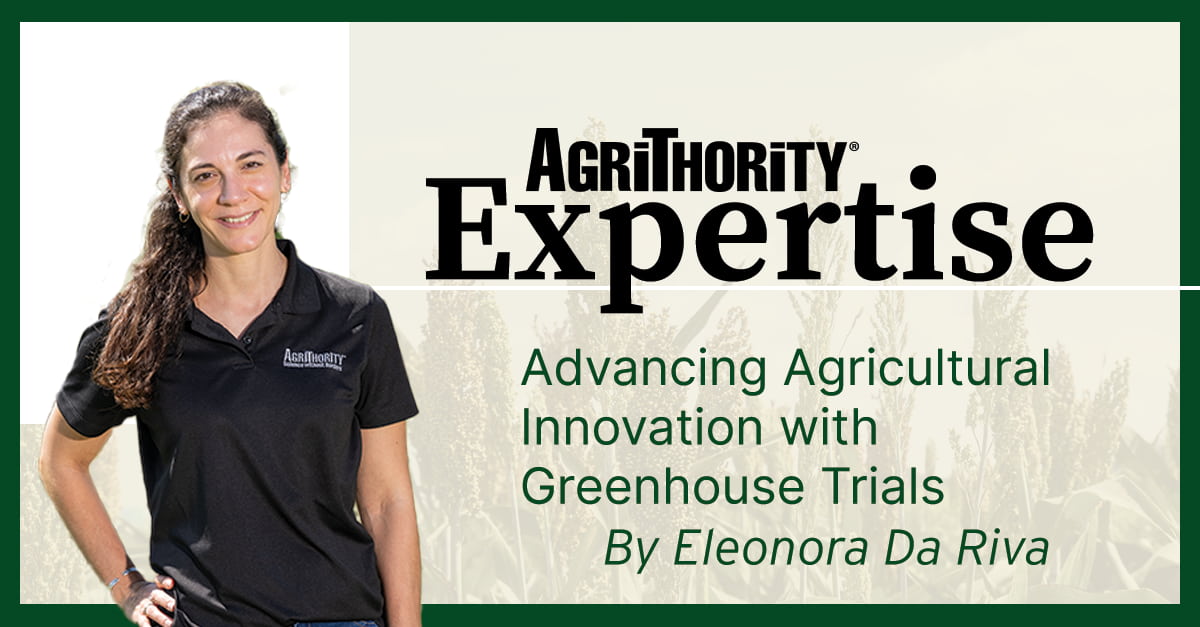The agriculture industry has changed drastically in the last few decades with the integration of new technologies seeking to make farming practices more productive, sustainable and profitable. Sustainability is now a major focus among agriculture experts, policy experts and industry stakeholders.
One of the key drivers for a sustainability-focused approach to global food systems is the pressing challenge of feeding a growing global population. At the current growth rate, the Food and Agriculture Organization estimates that production will need to increase by 70 percent by 2050. Achieving this sustainably requires a new approach involving transformation of the agricultural sector from a linear “take-make-dispose” model to a circular economy that regenerates soils, reduces inputs, and closes nutrient loops while minimizing environmental impact. Waste reduction and resource optimization are two interconnected principles at the heart of a circular economy model. Let’s explore how waste reduction and resource management can have an impact on sustainability of the agricultural sector.
Waste Reduction
Waste reduction is integral to circular systems, where materials and products are used for as long as possible. The United States Department of Agriculture (USDA) reports that 30–40 percent of the food supply is wasted, which puts more strain on land, water, energy and labor resources to dispose of this food. The USDA also noted that the way to reduce waste is to not create it in the first place. However, this effort is not necessarily an easy one because the reality is that by-products and side streams are unavoidable. The opportunity lies in finding ways to repurpose them into new value chains through circling them throughout the farming system.
One striking example comes from the United States. A company protected by numerous waste management patents has developed technology to upcycle specific livestock waste into a unique biofertilizer product that redefines plant nutrition management by supplying a combination of plant-available nutrients, plant-fortifying microbial compounds, and beneficial bacteria.
In 2022, the company commissioned AgriThority® to evaluate the performance of their product in on-farm corn tests across ten trial locations to better define conditions in which the product is most likely to perform. Utilizing the TrialWerx® large scale trialing system, multiple layers of data were collected and analyzed from stand counts, NDVI readings of satellite images, and soil health properties to stalk size, root lodging, disease scores and harvested yield. Specific low yielding and low fertility conditions were identified in which yield response was greater. Yield response delivered up to $16.40 per acre gross increase in revenue for solid return on investment.
Another example of agricultural waste reduction through upcycling is seen in the brewing industry. Companies such as ReGrained have patented technologies to transform brewer’s spent grain (BSG), the primary byproduct of the beer brewing process, into high value functional ingredients with applications in food products such as bread, cookies and crackers, enhancing their fiber and protein content. Beyond food, BSG is also being upcycled into leather alternatives and biodegradable packaging, extending its value beyond agriculture.
These cases highlight how waste reduction creates new markets and value streams. However, challenges remain. For many farmers, especially small landholders, adopting circular practices is constrained by limited financing, infrastructure, and training. Moreover, reintroducing waste streams into the food chain requires careful oversight to avoid food safety risks. Addressing these barriers will be critical if circular practices are to scale equitably.
Resource Optimization
Resource optimization takes the logic of waste reduction one step further. Instead of seeing residues as unavoidable burdens, it reframes them as inputs into new cycles. This has profound implications for water, nutrients, and energy use in agriculture.
In the wood pulping industry, lignin is a major by-product from producing pulp for paper. Lignin was historically considered a waste product until the 1990’s. Today, lignin is used in manufacturing resins, adhesives, plastics and insulators, but the current uses are not sufficient to utilize the volume of lignin produced by the industry.
In Europe, a forestry company set an ambitious target to recycle or reuse all its process waste from pulp production. Some of their side streams are now being utilized as liming agents, soil improvement materials or fertilizers but they continue to look for new uses. They have developed two lignin-based biostimulants for the ag industry. One product induces the plant to produce metabolites with auxin-like effects and improves solubilization of macronutrients. The other product contains phytochemicals that plants use to cope with biotic and abiotic stresses.
AgriThority was commissioned to analyze greenhouse, growth chamber and small plot field trial studies the client had conducted on nine different crops to understand the variability in product performance across environments and conditions.
Analysis of results from biostimulant studies on one product showed significant and consistent effects on crop growth and productivity. Results from biocontrol studies of the second product showed an efficacy comparable to Cu-based fungicides, higher than one biological check and lower than most other chemical commercial checks. Recommendations were made for further development.
A multinational chemical company has developed a renewable source for production of plant health biostimulant technology. Its production process uses proprietary methods to create a technology from natural organic matter that enhances nutrient uptake and translocation in plants. This proprietary process targets and extracts specific, biologically active compounds from naturally derived, renewable and sustainable organic material. These extracts are then concentrated into final products that can be used to promote nutrient uptake and translocation, enhance root and vegetative growth and mitigate abiotic stresses, such as drought or soil salinity. AgriThority has worked with both the original developer of this technology and the multinational company that later acquired the technology. Efficacy was defined through field testing programs and in-depth analysis of data sets to define the efficacy of the product.
In Africa, Sanergy in Kenya operates one of the largest insect-based circular systems in the world. Using Black Soldier Fly (BSF) larvae, Sanergy converts urban organic waste into high-quality animal feed protein and organic fertilizers. Its facilities process thousands of tons of waste annually, producing affordable alternatives to imported soy and fishmeal. This model not only addresses waste management challenges in rapidly growing cities but also supports regional food security.
In Latin America, Brazil’s sugarcane industry has pioneered circular energy models by using bagasse (fibrous cane residue) to generate bioelectricity, supplying power to both mills and national grids. Waste product from fermentation and distillation of sugarcane is called vinasse. In Brazil many ethanol plants further anaerobically digest vinasse to produce biomethane which is then used as fuel for farm machinery, vehicles or other uses.
This demonstrates how resource optimization can create value chains extending well beyond agriculture itself.
Policy and Regulation as Catalysts
Circular agriculture thrives when supported by enabling policy frameworks. Globally, governments are adopting measures to accelerate transitions to circular systems.
In the United States, the White House, EPA, USDA, and the Food and Drug Administration (FDA) recently released the “National Strategy for Reducing Food Loss and Waste and Recycling Organics.” This initiative is part of a broader effort to embed circular principles into the food and agricultural sectors.
In Europe, a range of policy instruments, and initiatives such as the European Green Deal are also in place to drive a circular economy. This has sparked development of regulatory frameworks such as the EU Fertilizing Products Regulation (FPR; Regulation (EU) 2019/1009), which came into effect in 2022. The regulation harmonized rules across the EU, creating a single market for fertilizing products, including those made from organic or side-stream materials. Before this, products derived from waste could only be marketed nationally, creating significant barriers to scaling. The FPR now allows companies to sell across borders once products meet EU-wide safety and quality criteria, accelerating adoption of circular fertilizers and other agricultural inputs produced from side-stream materials.
The African Union is promoting a circular bioeconomy, through the recent launch of the “Continental Circular Economy Action Plan (CEAP) for Africa (2024–2034)” in partnership with the European Union. Among its goals is promoting sustainable agriculture by turning waste into resources and encouraging innovation in nutrient and resource management.
Similar trends are also occurring in other regions such as the Middle East where national strategies such as the Saudi Green Initiative, a part of Vision 2030, are driving circular farming innovations to tackle water scarcity, climate challenges, and food security needs.
Across these regions, it is clear that harmonized standards, investment incentives, and supportive regulation accelerate circular adoption, while fragmented or restrictive frameworks hold it back.
Final Thoughts
The shift toward a circular economy in agriculture is essential to securing the resilience of global food systems. Waste reduction and resource optimization provide pathways to create new value streams, lower environmental pressures, and strengthen resilience against climate change, resource scarcity, and population growth.
Scaling circular agriculture, however, requires more than isolated innovations. Policymakers need to design supportive regulatory frameworks. Investors must channel resources into technologies with the potential to scale. Farmers, especially small landholders, require access to affordable tools, financing, and training so they can fully participate in the transition.
When governments, businesses, and communities work together to advance these goals, agriculture can move from being a system that depletes resources to one that regenerates ecosystems while nourishing people and supporting livelihoods.


